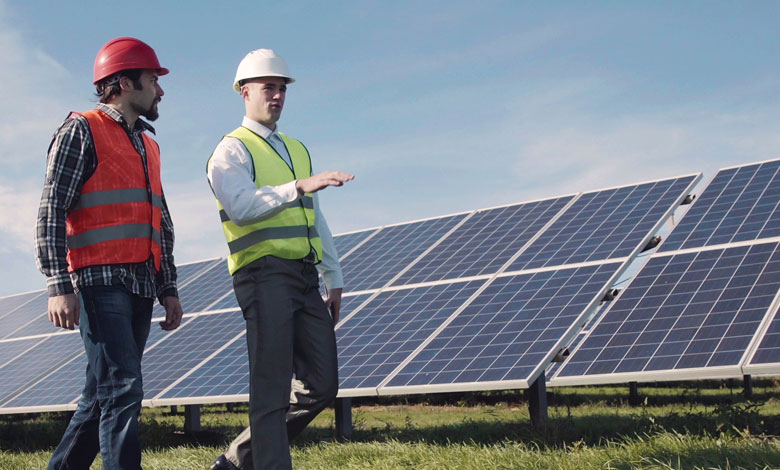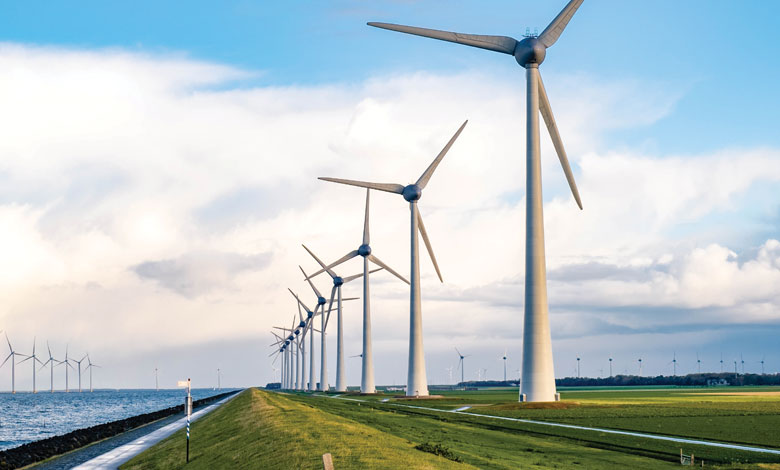Moving into the future: UK renewable energy

While the future of renewable energy in the UK looks promising, there are complex risks that need to be navigated. Early engagement with renewable energy insurance specialists is crucial for the success of projects.
The UK is at a critical juncture when it comes to its energy future. With a clear goal of achieving net zero emissions by 2050, the nation is moving towards a future powered by renewable energy sources.
However, there are inherent risks involved in this transition. Unfamiliar technologies, volatile markets, and complex supply chains introduce uncertainties that could derail even the well-planned projects. To navigate these challenges, a robust safety net and early planning are necessary.
“The renewable energy sector is not without its challenges in terms of, for instance, skill sets and supply of materials. However, particular to this sector, in terms of what businesses want to deploy; what is best suited for their business, and how do they start decarbonising their organisation to get on that green journey,” says Carl Gurney, Renewable Energy Director, Gallagher.
The UK Government has set ambitious targets for the closure of coal-fired power plants and the transition away from fossil fuels. The contribution of coal to the UK’s electricity generation has already plummeted from 40 per cent in 2010 to around 2 per cent in 2020. The recent global energy crisis caused by the Russia-Ukraine war has highlighted the vulnerabilities of relying on imported fossil fuels and the importance of seeking energy independence. Avoiding wholesale pricing volatility has become urgent.
To achieve the goal of net zero emissions by 2050, a full range of renewable and clean energy technologies will be required. Wind power is currently the dominant contributor, with offshore and onshore wind farms producing 80,000 GWh and providing nearly 60 per cent of all renewable power generation. Biomass power and solar energy also make significant contributions. Other renewable technologies like anaerobic digestion, hydro and tidal plants, and waste-to-energy generation are growing and expected to contribute more in the coming years.
Chris Noah, Gallagher’s Renewable Energy Managing Director, explains: “Long duration energy storage systems and EV charging stations need to be developed to meet demand, but these are huge infrastructure changes that require government impetus. Loss control for projects needs to be included in the build because retrofitting down the line is not only costly, the downtime causes business interruption.”
Government policies, such as the Climate Change Act and the Net Zero Strategy, are acting as catalysts for the development and adoption of renewable energy sources. Financial incentives and regulatory frameworks are being put in place to accelerate the transition. The Government has allocated significant funding to projects in the hydrogen sector, with the aim of achieving 1GW of electrolytic hydrogen production by 2025.
Government legislation is playing a significant role in shaping waste management practices. In England, separate food waste collections will become mandatory by 2026, as mandated by the Government. The Department for Environment, Food, and Rural Affairs (Defra) has identified anaerobic digestion (AD) plants as the preferred treatment method for this waste stream. This legislation reflects the Government’s commitment to reducing food waste and promoting sustainable waste management practices. By implementing separate food waste collections and prioritising AD plants, the Government aims to minimise the environmental impact of food waste and maximise its potential for energy generation through anaerobic digestion.
Stephen Skelly, account director, public sector, education and housing at Gallagher comments: “Local authorities are increasingly focused on climate change, clean air, and energy security. They recognise the importance of addressing these issues and are taking steps to prioritise them. This shift in focus aligns with the UK’s goal of achieving net zero emissions by 2050 and transitioning to renewable energy sources. By prioritising climate change, clean air, and energy security, local authorities are playing a crucial role in driving the nation’s energy transition and creating a sustainable future.”
Technological advancements are also driving the renewable energy sector forward. Floating wind farms, which were once seen as a futuristic dream, are now a reality in the UK. The Kincardine wind farm in Scotland, the world’s largest floating wind farm, has been operational since 2021 and is generating enough electricity to power 50,000 households. Hydrogen, produced from renewable energy sources, holds immense promise and could revolutionise transportation, heating, and industry. The UK is a pioneer in leveraging this technology.
While the future of renewable energy in the UK looks promising, there are complex risks that need to be navigated. Insurers face challenges in underwriting risks associated with emerging technologies, volatile pricing, and a lack of historical data. The sector also faces a shortage of experienced engineering, procurement, and construction contractors, as well as supply chain issues. Securing essential materials and skilled labour can be a time-consuming and costly process.
A lack of historical data regarding the performance of renewable energy technologies has caused insurers difficulty in terms of pricing and risk profiling. With new technologies now entering the sector, such as LDES and hydrogen; coupled with larger more complex sites being developed, expertise and knowledge sharing is paramount to ensure long-term insurance security. Business continuity plans, contractual relationships with OEMs and system resilience will all compliment a robust insurance programme. This will in turn help mitigate supply chain constraints and ultimately protect your investment.
Early engagement with renewable energy insurance specialists is crucial for the success of projects. These specialists can assess risks, provide mitigation strategies, and secure optimal insurance coverage. Gallagher, a global insurance brokerage and risk management company, has extensive experience serving clients in the renewable energy industry. Their team of experts understands the intricacies of the sector and can provide tailored solutions to mitigate risks.
“We love to get involved with clients as early as possible; help them build the necessary plans and loss controls into their designs. This ensures the projects are insurable and as such bankable and in addition, we can then provide long-term insurance stability. This coupled with fostering industry and client knowledge along with partnering clients with the right cultural approach to risk makes projects attractive to a wider pool of insurers,” says Gurney.
In conclusion, the UK’s renewable energy sector is at a pivotal moment. With ambitious targets for net zero emissions by 2050, the nation is moving towards a future powered by renewable energy sources. However, there are inherent risks involved in this transition. Navigating these challenges requires a robust safety net and early planning. Insurance plays a crucial role in securing a sustainable future for the UK’s renewable energy sector. By understanding and mitigating risks, insurers can support businesses in reaching their goals and contribute to the nation’s energy transition.
Stephen Skelly
Account director – public sector, education, and housing
T: +44 (0) 2890 897 393
E : stephen_skelly@ajg.com
W: www.ajg.com








